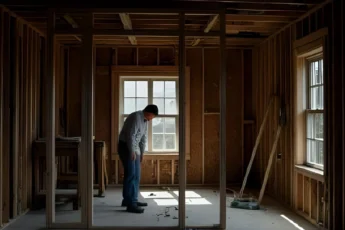Multiplex Development in Toronto: The Untapped Potential of Adaptive Reuse
In the face of Canada’s ongoing housing challenges, the conversation often revolves around new construction and increased density. However, an often-overlooked solution that is also gaining attention lies in the adaptive reuse of existing structures. This approach not only offers a sustainable alternative to new construction but also fosters community revitalization and economic growth.
The Concept of Adaptive Reuse in Multiplex Development
Adaptive reuse involves repurposing old properties for new uses, such as converting single-family homes into multi-unit residential spaces. This strategy capitalizes on existing infrastructure, reducing the need for new materials and minimizing environmental impact.
Converting Single-Family Homes into Multiplexes
One practical example of adaptive reuse is the conversion of single-family homes into multi-unit residences. This approach can significantly increase housing density in established neighbourhoods without drastically altering the existing architectural landscape.
Demographics and the Shift to Multiplex Housing
This demographic shift is one reason why multiplex development is gaining attention in Toronto and other urban areas.
Families in Canada are getting smaller, with the average household size decreasing. This shift in demographics means that the need for large-family homes is diminishing. Where a single-family property once housed a family of 5-6, the trend is now towards smaller family units.
Environmental Benefits of Multiplex Housing
Adaptive reuse offers a sustainable solution to Canada’s housing challenges by reducing the environmental impact of new construction. By repurposing, refurbishing, and reconfiguring existing buildings, we can extend their lifespan and avoid the energy-intensive process of producing new materials. This approach contributes to decarbonizing the building stock, making it a key strategy for lowering the carbon footprint of urban development.
You Might Be Interested: From $24,000 to $140,000: The Remarkable Conversion of This Single-Family Property
Economic Benefits: A Case Study in Toronto
In addition to its environmental advantages, adaptive reuse also provides strong economic returns. A recent case in Toronto illustrates this: a low-performing single-family bungalow was converted into a fourplex rental property in just eight months.
Before the transformation, the bungalow generated an annual income of $24,000. After being converted into a fourplex, its income skyrocketed to $140,000 per year, demonstrating the financial viability and profitability of such projects.
Revitalizing Communities Through Multiplex Development
Adaptive reuse projects have the potential to transform neighbourhoods by attracting new residents and businesses. When old single-family properties are converted into residential units, they often become catalysts for broader community revitalization. New residents bring increased demand for local services, supporting small businesses and encouraging further investment in the area.
Challenges and Considerations in Multiplex Housing
Despite its benefits, adaptive reuse is not without challenges. Developers must navigate complex zoning regulations and building codes, which can vary significantly between jurisdictions.
Community resistance can also pose a hurdle, particularly if residents are concerned about changes to the neighbourhood’s character or potential increases in property values.
You Might Also Like: Data-Driven Fourplex Conversions in Toronto: 30 Years of Rental Insights
Conclusion
As Canada continues to grapple with housing shortages and affordability issues, adaptive reuse offers a compelling alternative to traditional development strategies.
Embracing this approach requires a shift in mindset, viewing old properties not as relics of the past but as opportunities for the future.
Watch Our Seminar
For a deeper dive into the phases of multiplex construction, from planning to development and leasing, check out our video seminar, “Unpacking Multiplexes.” This seminar provides insights from industry professionals on the considerations, challenges, and strategies involved in successful multiplex development.



